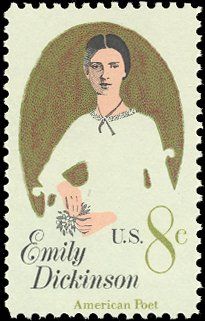The middle of July has arrived, and that means it’s time for this playful lyric by Emily Dickinson — it’s our traditional homeschool poem-of-the-week for the third week of this mid-summer month.
Answer July —
Where is the Bee —
Where is the Blush —
Where is the Hay?Ah! said July —
Where is the Seed —
Where is the Bud —
Where is the May —
Answer Thee — Me —Nay — said the May —
Show me the Snow —
Show me the Bells —
Show me the Jay!Quibbled the Jay —
Where be the Maize —
Where be the Haze —
Where be the Bur?
Here — said the Year —
This would be a wonderful poem for your students to memorize, or to perform in a group reading. It’s a conversation among four speakers (plus a narrator): May speaks first; July answers; May responds and asks again; the Jay interjects; and the Year answers all. (And the narrator speaks the connecting phrases: “said July,” “said the May,” “Quibbled the Jay,” and “said the Year.”)
Although the poem’s lightness makes it appear effortless in its composition, be sure to invite your students to look carefully at the poem’s structure to see how precise and artful it is. The stanzas have four, five, four, and five lines, and every line from beginning to end has exactly four syllables. And except for Quibbled, July, and Answer, the poem is made up entirely of one-syllable words.
![[Dickinson Manuscript]](https://riverhouses.org/wp-content/uploads/2020/07/dickinson-answer-july.png)
But what’s with all the dashes and the lack of standard punctuation? Although Emily Dickinson (1830–1886) wrote more than 1000 poems and is now regarded as one of the great American poets of the nineteenth century, fewer than ten of her poems were published during her lifetime. Nearly all her verses are known today from the original manuscript (handwritten) copies that her sister Lavinia preserved after Emily’s death, contrary to the poet’s wishes. (She had given instructions that they all be burned.) And because those manuscript copies, written in Dickinson’s spidery handwriting, never went through the conventional editing and publishing process during her life, they’re still packed full with all of the poet’s own idiosyncratic markings — and that’s how literary scholars reproduce them today. (If you want a version with modern, regularized punctuation for ease of reading and understanding, see the comment at the bottom of this post.)
Through the miracle of modern technology, you and your students can examine almost all of Emily Dickinson’s manuscripts online right now from the comfort of your home academy, via the Emily Dickinson Archive (edickinson.org). Why not take a look at the original of “Answer July” or any of a number of Dickinson’s other famous poems and see how much of her handwriting you can learn to decode.
What wonderful words and poetical productions are you and your students examining in your homeschool this Hercules Term? 😊
❡ Answer thee, me: If a special line or turn of phrase happens to strike you in one of our weekly poems, just copy it onto your homeschool bulletin board for a few days and invite your students to speak it aloud — that’s all it takes to begin a new poetical friendship and learn a few lovely words that will stay with you for life. 🐝
❡ Literary lives: The website of the Poetry Foundation includes biographical notes and examples of the work of many important poets (including Emily Dickinson) that are suitable for high school students and homeschool teachers. ✒️
❡ Here, said the year: This post is one of our regular homeschool poems-of-the-week. Print your own River Houses Poetry Calendar to follow along with us as we visit fifty of our favorite friends over the course of the year, and add your name to our River Houses mailing list to get posts like these delivered right to your mailbox every week. 📫
❡ Homeschool calendars: We have a whole collection of free, printable, educational homeschool calendars and planners available on our main River Houses calendar page. They will help you create a light and easy structure for your homeschool year. Give them a try today! 🗓
❡ Support our work: If you enjoy our educational materials, please support us by starting your regular Amazon shopping from our very own homeschool teaching supplies page. When you click through from our page, any purchase you make earns us a small commission at no extra cost to you. Thank you for helping us to keep going and growing! 🛒
❡ Join us! The aim of the River Houses project is to create a network of friendly local homeschool support groups — local chapters that we call “Houses.” Our first at-large chapter, Headwaters House, is now forming and is open to homeschoolers everywhere. Find out how to become one of our founding members on the Headwaters House membership page. 🏡





If you want a version with modern, regularized punctuation for ease of reading and understanding, try this: